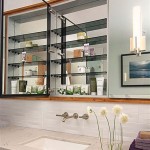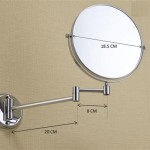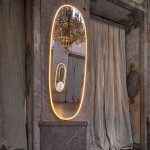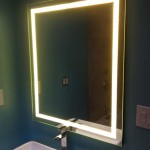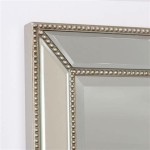Light and Mirrors: A Reflection on Reflection
Mirrors, those ubiquitous objects found in homes and scientific laboratories alike, are more than just tools for personal grooming or vanity. They are fascinating tools that play a crucial role in our understanding of light and its behavior. Mirrors are designed to reflect light, effectively bouncing it back into our eyes, allowing us to see our reflections. But the relationship between light and mirrors goes far beyond mere reflection. It delves into the fundamental principles of physics and the intricate interplay of light waves and surfaces. Understanding the interaction between light and mirrors provides insights into how light behaves, how we perceive our surroundings, and how optical technologies work.
The Nature of Light
Light, a fundamental aspect of the universe, is a form of electromagnetic radiation. It travels in waves, oscillating electric and magnetic fields, and exhibits both wave-like and particle-like properties. When light encounters a surface, it can interact in multiple ways, including absorption, transmission, and reflection. Absorption occurs when the surface transforms light energy into heat. Transmission happens when light passes through the surface, like in windows. Reflection, the focus of this discussion, involves light bouncing back from the surface.
Mirrors are specifically designed to enhance reflection. Their surfaces are highly polished and smooth, minimizing the absorption and transmission of light. This smooth surface ensures that light waves striking the mirror are reflected in a highly predictable manner. Understanding the nature of light and its interactions with surfaces is crucial for comprehending how mirrors work.
Reflection: The Mirror's Magic
Reflection, the process of light bouncing back from a surface, is governed by the laws of reflection. These laws dictate the direction of the reflected light based on the angle of incidence, the angle at which the light strikes the surface. The first law states that the angle of incidence is equal to the angle of reflection. This means that the reflected light ray bounces back at the same angle as the incoming light ray, but on the opposite side of the normal (a line perpendicular to the reflecting surface).
The second law states that the incident ray, the reflected ray, and the normal all lie in the same plane. This ensures that the reflection occurs in a predictable and consistent manner. These laws govern the reflection of all types of light, whether it's visible light or other forms of electromagnetic radiation.
Types of Mirrors and Their Applications
Mirrors come in various forms, each designed for specific applications. Plane mirrors, the most common type, have a flat reflecting surface. They produce virtual images, meaning images that appear to be behind the mirror but are not actually present. Plane mirrors are used extensively in daily life, from bathroom mirrors to rearview mirrors in cars.
Concave mirrors, with a curved inward surface, converge light rays towards a focal point. This property makes them ideal for focusing light, as in telescopes and solar concentrators. Convex mirrors, on the other hand, have a curved outward surface that diverges light rays. They are used in security mirrors, offering a wide field of view. These different types of mirrors, with their distinct properties, have a wide range of applications in science, technology, and everyday life.
Mirrors, though seemingly simple objects, are intricate tools that reveal the fundamental nature of light. Their ability to reflect light in specific ways allows us to see ourselves, explore the universe, and harness the power of light in various technological applications. From the everyday use of bathroom mirrors to the advanced applications in telescopes and lasers, mirrors remain essential components in our understanding of the world and our interactions with light.

Are Led Mirrors Bright Enough

18w Modern Electroplated Brass Gold Led Wall Light Mirror Vanity Picture Lamp Warm White Ashish Electrical

Dressing Table Mirror Led Mirrorwalla

Toolkiss 40 In W X 32 H Rectangular Frameless Led Light Anti Fog Wall Bathroom Vanity Mirror With Backlit And Front Tk23607 The Home Depot

Princeart Led Mirror With Light Bathroom Wall Decor Makeup Room 18x24 Inch Lt83 In Buy

Aria Led Lighted Mirror Electric Lighting Company

Joziba J 01 18 X 24 Inch White Light Bathroom Mirror In Buy At Flipkart Com

Buy Led Bathroom Vanity Picture Mirror Light Black Gold Wall Lamps N Lighten

Irregular Backlit Led Bathroom Mirror With Multi Lighting 3 Lights Integrated Accent

Led Mirror With Buddha Design Warm Light Rectangular Flair Glass



